How To Brand a Craft Show Display Without a Logo
Branding your craft show table doesn’t mean adding a banner with your business’s name or plastering your logo on different items.
If you have a logo, great! That should definitely be present in your booth so existing customers can find you and new customers can remember you.
But if you don’t have a logo, don’t let that stop you from thinking about your brand and how it applies to your display.
A branded craft show table is more about the feel or vibe you create in your space to give shoppers a unique and memorable experience.
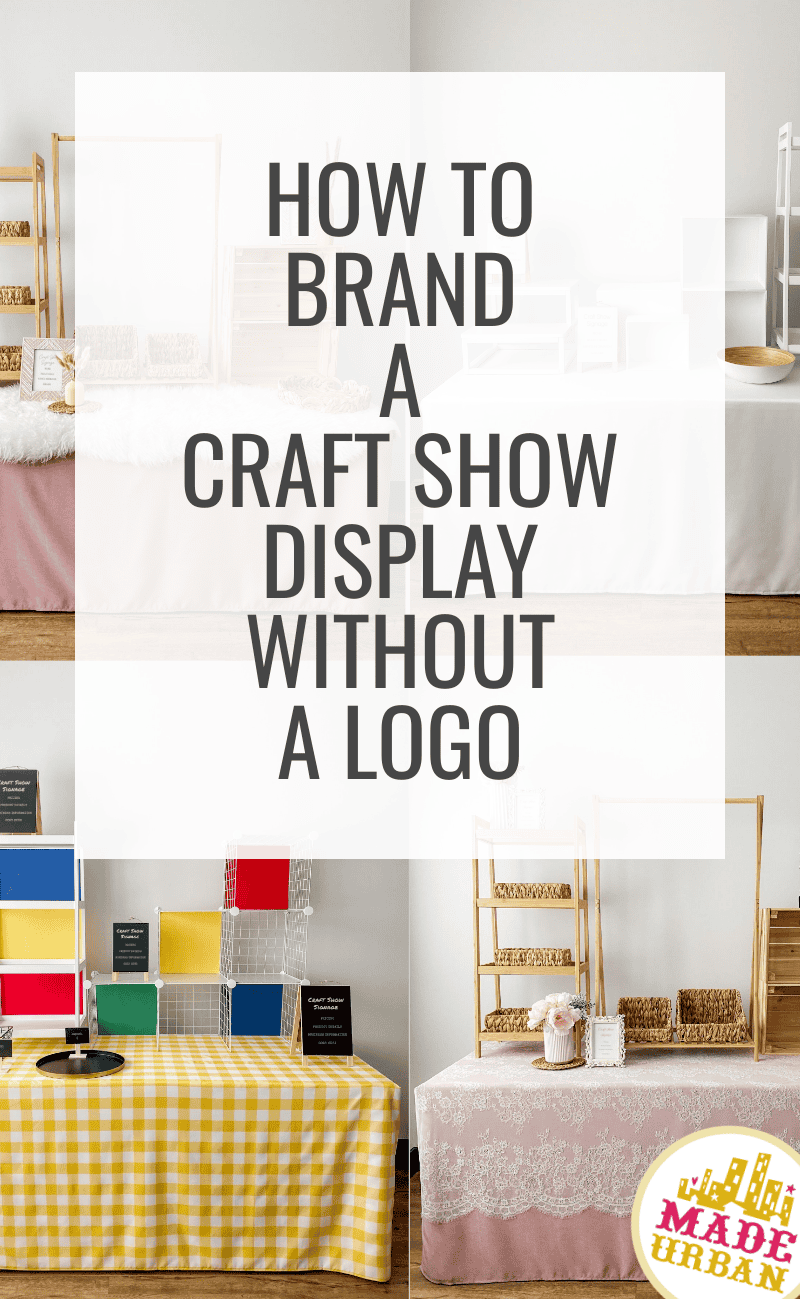
Why you should brand your craft show table
There are a few key reasons you should take the time to think about your brand and how to apply it to your craft show display.
- Stand out – At any craft show there is table after table of vendors, maybe even rows upon rows of them. If every space uses a white tablecloth and neutral display fixtures, every stall starts to look similar. Branding your craft show space can help your business stand out and attract more shoppers.
- Create an experience for shoppers – viewing products on a table feels pretty ordinary at a craft show. But branding a space that indulges all the senses creates a special experience.
- Be remembered – branding helps consumers remember your business so you don’t just become another soap vendor, jewelry vendor, art vendor, etc. at a craft show. When shoppers remember your business, they’re more likely to find it after an event and buy from you (again).
How to brand your craft show space
If you have a logo and/or a banner with your business’s name on it, you should add it to your display. However, the following steps share how you can create a branded experience in your booth or at your table, without the use of a logo.
Step 1 – Define your brand
If you haven’t done so already, define your brand. You’ll find a detailed step-by-step plan to define your brand here, but below are a few quick things to consider.
Don’t make this more complicated than it needs to be. Remember, your brand is not your logo, so you don’t need to hire a logo designer or branding expert to complete this step.
You simply need to define the look and feel of your brand.
How do you want to make shoppers/customers feel?
When someone is using your products, how do you hope they feel? Or better yet, how do they want to feel? Your answer will depend on the product you sell and your target market. It could be anything from sophisticated and trendy (when wearing jewelry) to happy and cozy (when decorating a nursery).
How would you define your business’s style?
If you’re having a hard time narrowing this down, consider this: if you have a logo already, how would you describe its style? Is it modern or classic? Masculine or feminine? Minimalistic or detailed? Professional or playful? If you don’t have a logo, what style would you ask a logo designer to use?
(Optional) Does your business serve a specific purpose?
If you’ve built a craft business that has an important mission or message or helps a cause, this will also be an important part of your branding. For example, I may create a business that is bee-friendly; by selling beeswax-free reusable food wraps and giving a portion of profits to organizations that help conserve bees.
A purpose may also relate to how you serve your market. For example, if I have a business that only sells school bags, cases, and supplies, “school” is the purpose of my business and would heavily influence my brand.
If this applies to your business, define your mission or purpose in one or two words.
What’s your price position?
Are you selling luxury items that come with an expensive price tag or more affordable versions of those products? Or perhaps somewhere in between. This is important to consider because it will impact the quality/design of the display fixtures/props/signage you use.
If you’re selling luxury jewelry that’s more expensive than competitors, you don’t want to use cardboard cutouts to display that jewelry or scribble prices on paper. You should invest in high-end jewelry fixtures and quality price tags to help increase the perceived value of your products.
Once you’ve thought about the questions above, complete the following:
- Choose one or two words to define the feeling you want to evoke.
- Choose one or two words to describe the style or look you want to create.
- If applicable, choose one or two words to define your business’s purpose.
- Use one or two words to describe your price position, such as: luxury, budget/affordable, value pricing, or mid-priced.
For example:
- Feeling: Cheerful
- Style: Youthful & Colourful
- Purpose: School
- Price position: mid-priced
Step 2 – Communicating your brand
A brand is communicated through a variety of elements that can be categorized by:
- Brand visuals (colours, patterns, props, etc.)
- Brand voice (keywords, style of writing/speaking, tone of voice, etc.)
- Brand behaviour (the way you act and interact with shoppers/customers)
So now we must think about how the feeling, style, purpose, and price position can be communicated through visuals, voice, and behaviour.
Feeling
Start with your feeling word. Consider how you might express that feeling through visuals, voice, and behaviour.
For example, if my keyword is “youthful”:
- Visuals
- Bold primary colours
- Handwritten or bubble fonts
- School or toy-themed icons and props
- Candy-inspired visuals/props/etc.
- Graphic patterns such as stripes, plaid, polka dots, etc.
- Cartoons/sketches/doodles
- Voice
- Using current slang and abbreviations (e.g. OMG!)
- Relaxed style of writing and speaking
- Short and to the point (no long paragraphs of text or sales pitches that drag on)
- Using keywords such as “young”, “fun”, “awesome”, etc.
- Implementing exclamation points and emojis in written text
- Behaviour
- Having a bubbly and carefree demeanour
- Being a little more playful with shoppers (rather than formal)
- Smiling/cheerful
- Open body language
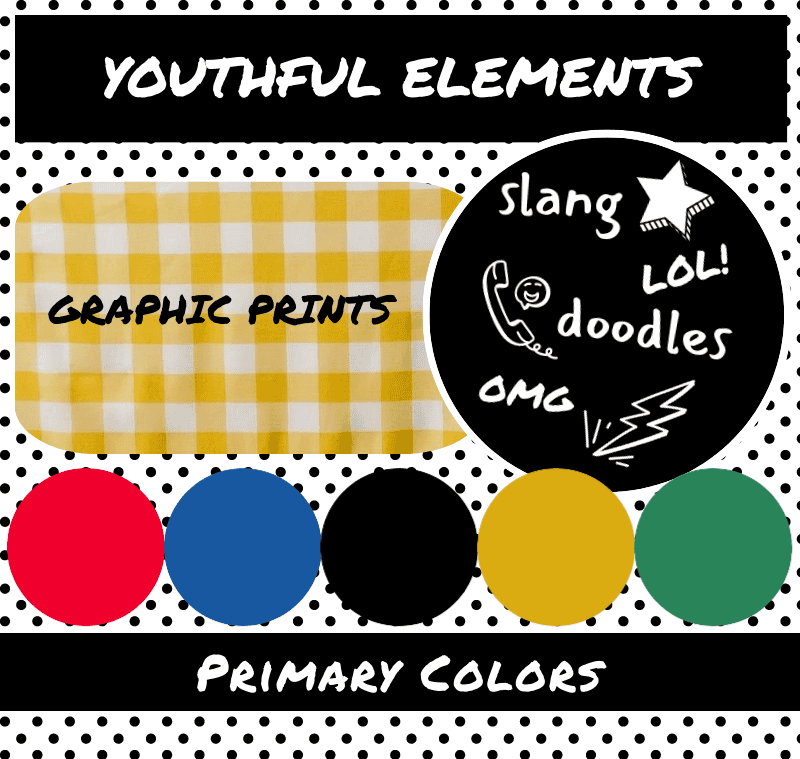
Style
Next, take your style keyword(s) and consider ways to communicate it through visual elements.
In some cases, your feeling keyword and style keyword will be synonymous.
For example, “youthful” can be both a feeling and a look.
If that’s the case, you don’t need to repeat this step.
However, if your style/look keyword adds a different element, describe how it will be communicated visually.
For example, if my style keyword is “modern” I may infuse:
- Clean lines and finishes
- Black, white, and grey
- Modern, streamlined fonts
You may use a mix of your feeling and style visual elements (e.g. some elements, such as props are youthful while some elements, such as font style, are modern). Or you may be able to combine them (e.g. modern font style in a primary (youthful) colour palette).
Purpose (optional)
If your craft business serves a greater purpose, consider ways that purpose can be communicated through visuals, voice, and behaviour.
For example, let’s say I make vegan reusable food wraps (no beeswax) because my purpose is to save the bees. I would want to incorporate symbols of bees, use bee colours, and use phrases such as “saving bees”, “bee conservation”, or “bee rescue” in signage and sales pitches.
Price position
Describe how your price position can be communicated through visuals, voice, and behaviour. Premium pricing will require higher-end finishes and a more polished selling style while budget-friendly pricing can get away with more casual finishes and selling style.
Other senses
Although it won’t work for everyone and may not be appropriate for every craft show, you may be able to communicate your brand through other senses.
Consider if/how you might communicate your brand through:
-
- Touch – are there any textures that reflect your brand and can be used for your tablecloth, fixtures, props, etc.? For example, “calm” might be translated to soft or smooth surfaces.
- Smell – although you want to be mindful of people with scent sensitivities, scent can play a big role in branding because of its connection to our memory. The subtle scent of lavender would help communicate “calm”.
- Sound – soft playing music or sounds (e.g. birds chirping, waves crashing, etc.) can also help build on your brand experience. A portable sound device could play calming music. Wind chimes at an outdoor event can help create a soothing experience. A small tabletop water fountain can create a sense of calm.
Step 3 – List craft show touchpoints
There are many ways you can communicate and express your brand. At a craft show, elements may include:
- Visuals
- Tablecloth
- Backdrop
- Sign holders
- Signage font & colour
- Props
- Fixtures (risers, shelves, trays, baskets etc.)
- Lighting
- Shopping bags
- Outfit
- Etc.
- Voice
- Signage text
- Packaging and tag text (e.g. product names and descriptions)
- Sales pitches
- Conversations
- Behaviour
- Your body language at a craft show
- Whether you sit or stand, where you position yourself (behind the table, beside, or in front)
- Facial expressions
- How you interact with shoppers and fellow vendors.
Each space and setup is different so brainstorm the different elements of your craft show display/booth.
Step 4 – Apply brand elements to craft show touchpoints
Now you can apply your brand’s defining visuals, voice, and behaviours to your craft show touchpoints.
Here’s an example of how a sophisticated, modern and minimalistic brand might be applied to a craft show display. This is also a great place to start if you’re unsure what your brand is. This blank palette can let your products speak for themselves.
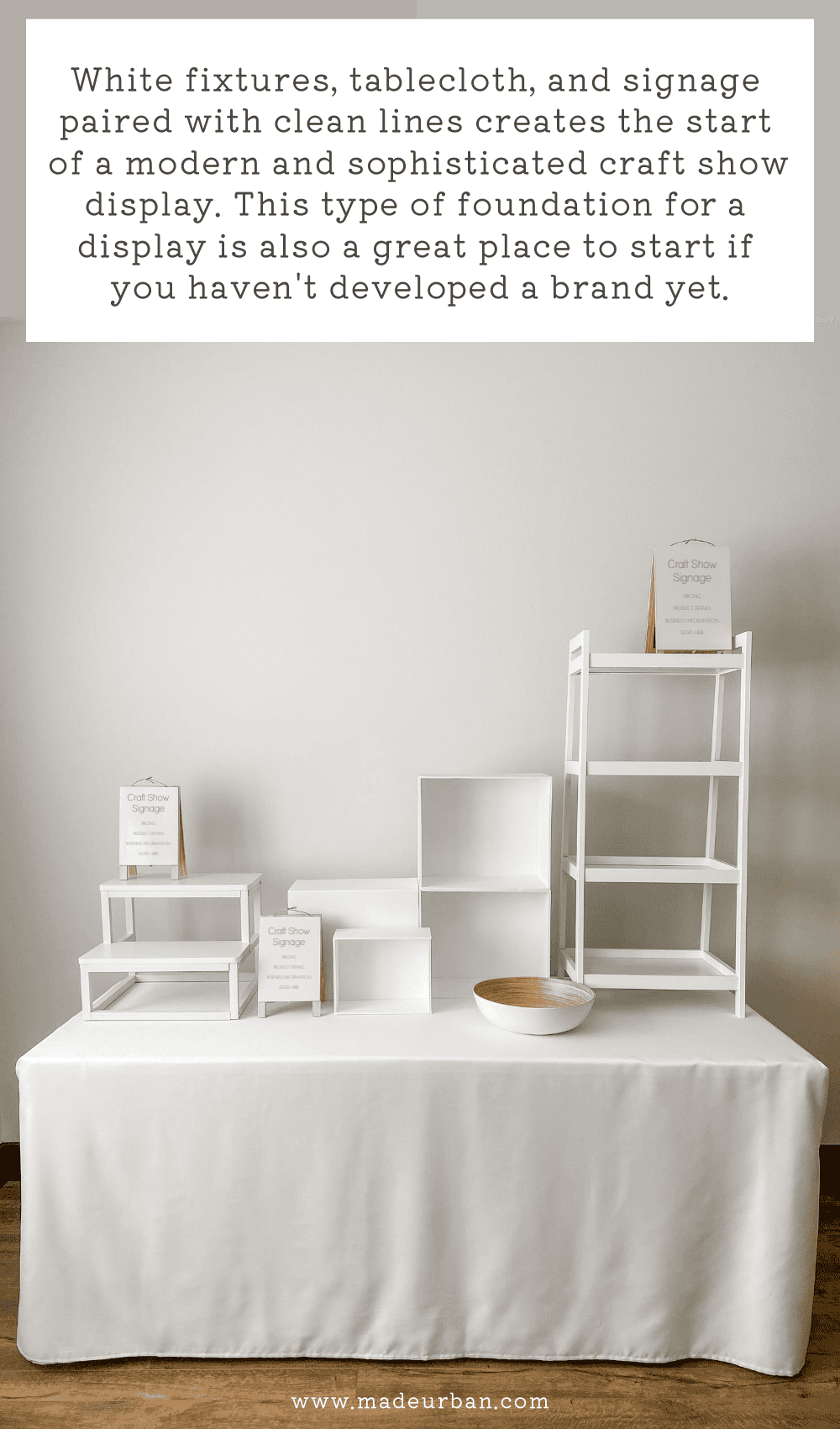
The example below creates a cheerful and colorful branded experience.
The space feels more “youthful” due to:
- The wire shelving (it reminds me of dorm rooms or lockers)
- The use of bold, primary colors
- A colourful graphic tablecloth
- Chalkboard signage
- Handwritten font
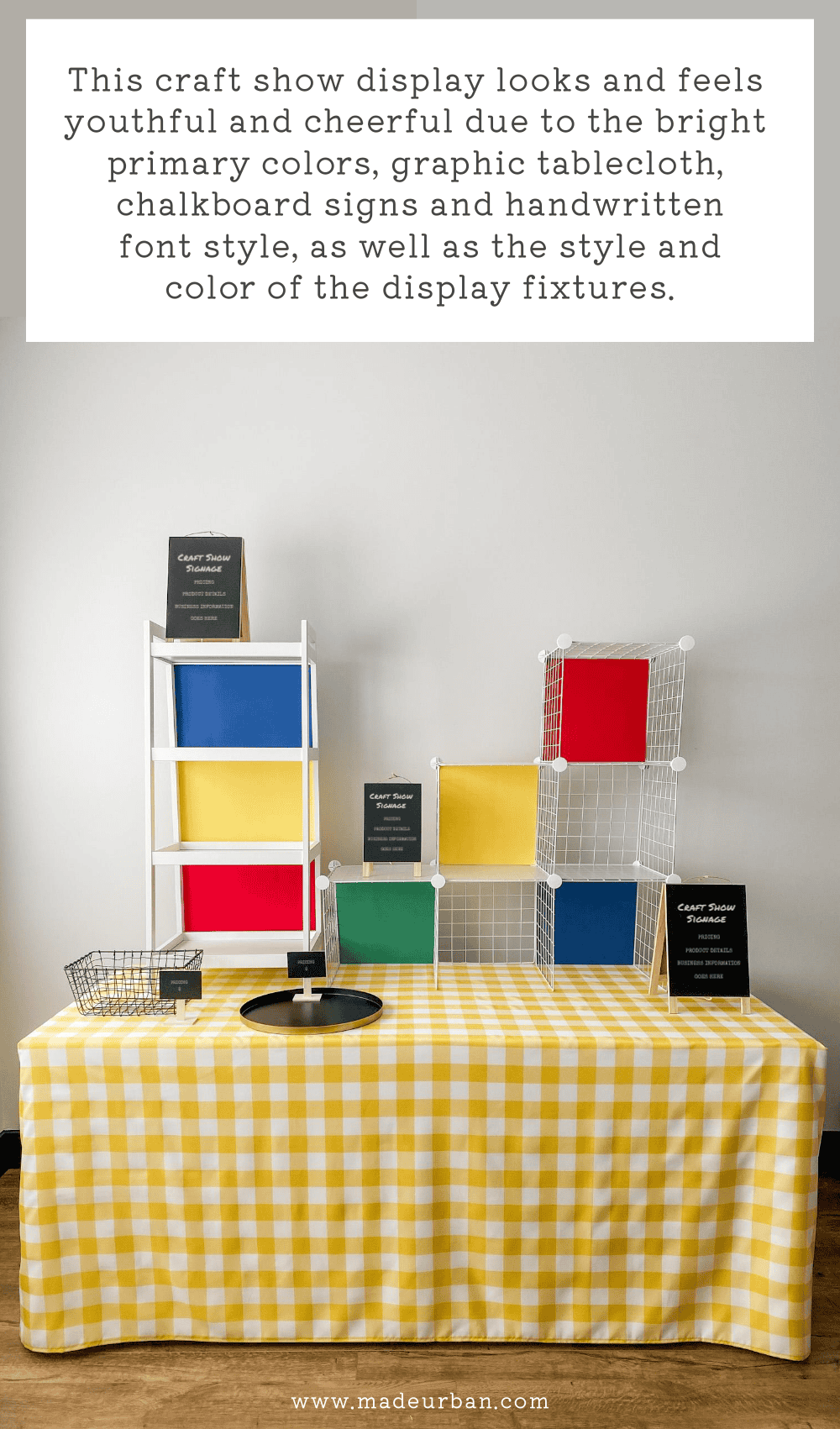
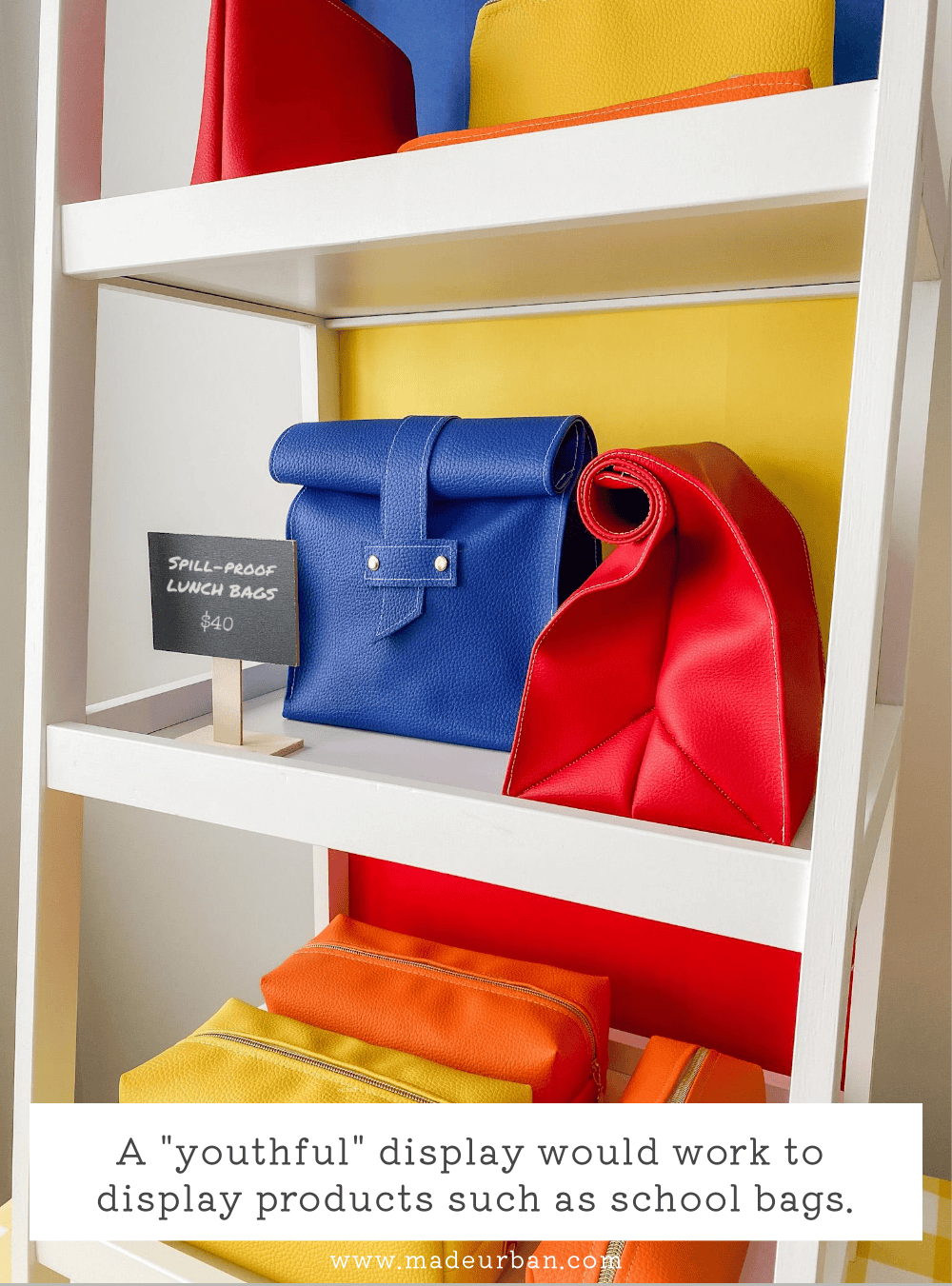
Adding more layers to your display through items like props can help you communicate your brand and strengthen your message.
The display creates a feminine feel with a vintage style. This is due to:
- Wood fixtures (which have more of a vintage look, rather than slick white finishes)
- Soft pink, green, and cream used throughout
- Vintage looking signage
- Lace table runner to add a feminine/vintage look and feel
- Flowers used as props
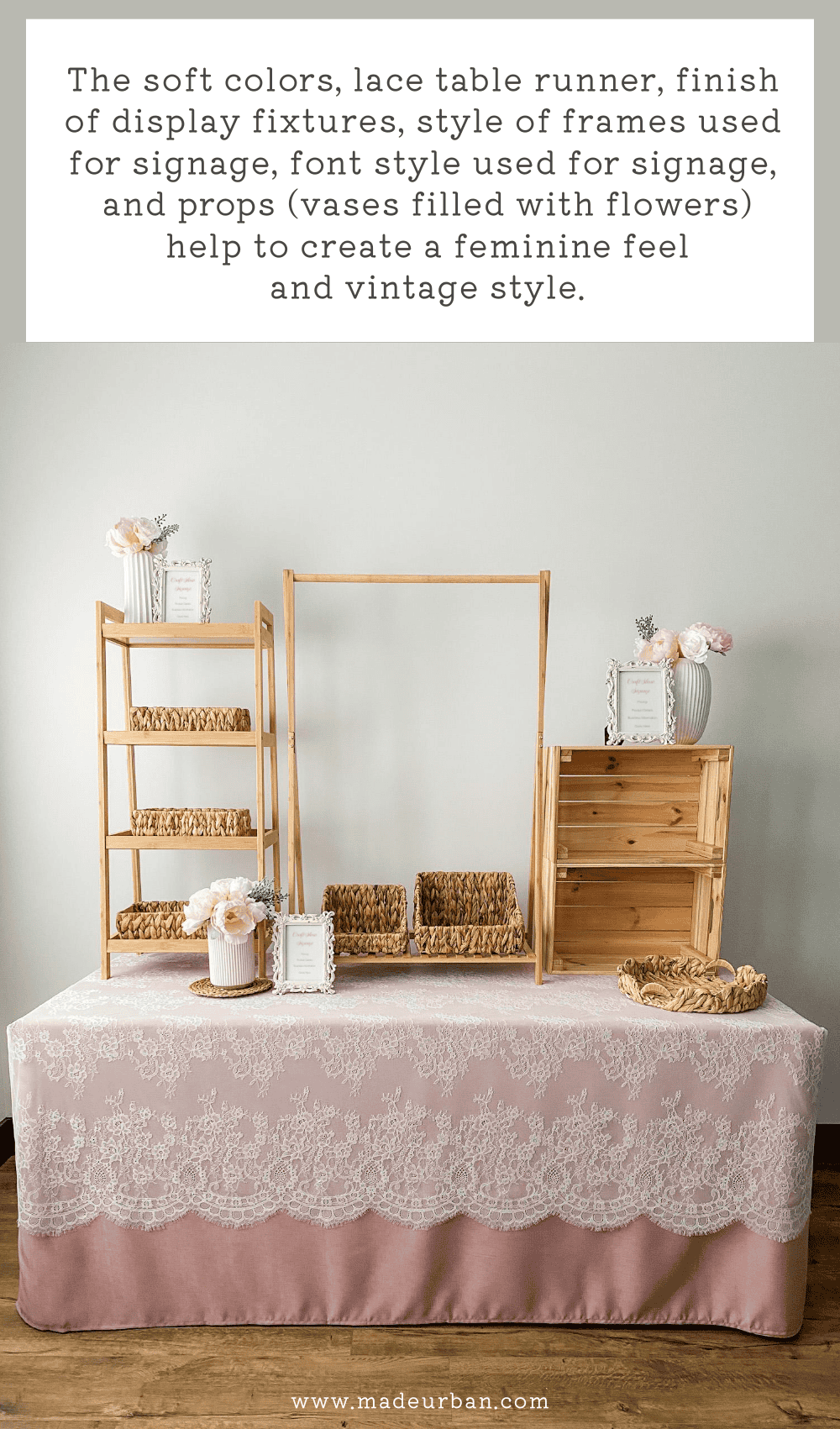
This last example shows how simply changing a few elements can change the look from “vintage” to “bohemian”.
Using a faux fur runner on the table (instead of lace), signage frames that have a bohemian feel, a different style of vase, and swapping flowers for feathers and dried grasses gives the space a bohemian look.
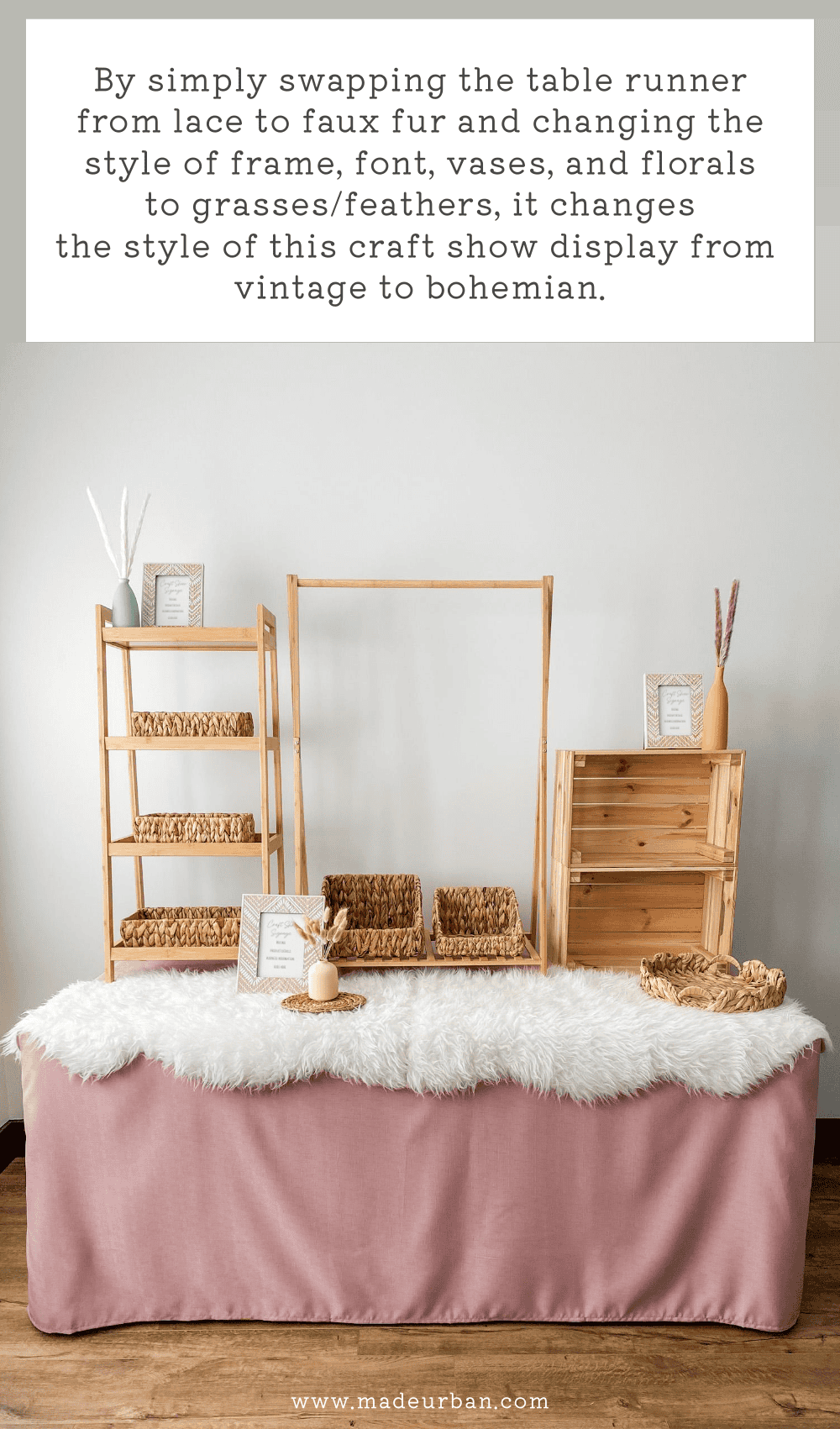
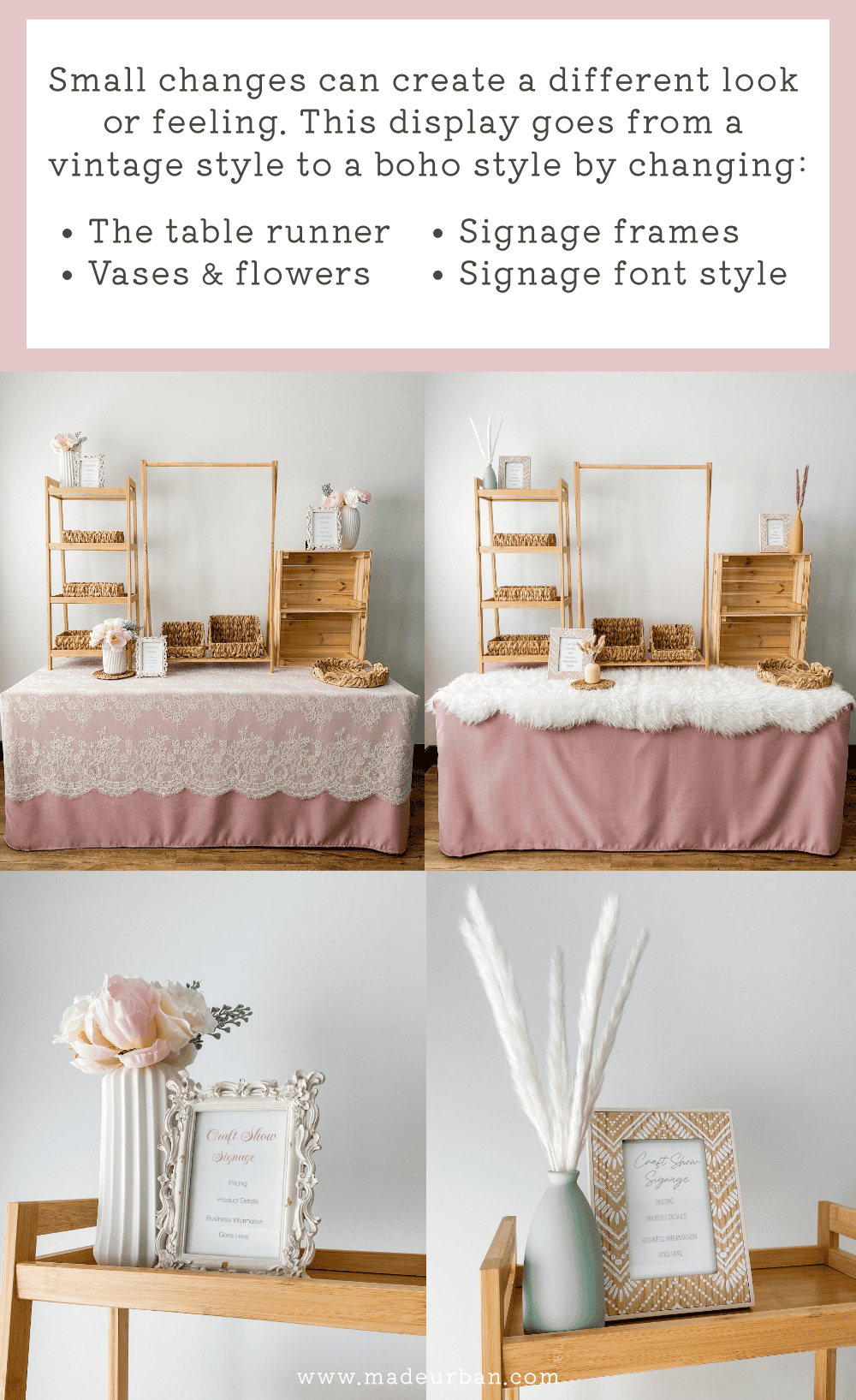
Start small and strengthen your brand’s presence at a craft show over time. You can see, through the examples, how small changes can change the feel of a space.
Step 5 – Edit products
Although your products for an upcoming craft show may already be made, remember that they should reflect your brand as well.
If your stock is made, consider removing any items that conflict with your brand. If you’re not ready to remove items, consider giving them less of a spotlight in your display or keeping them behind the table to pull out if a shopper is looking for something specific.
If you have time to create stock for a craft show, consider your brand’s definition when planning products.
For example:
>> if my brand is “youthful” and I’m selling bags, I would stay away from more “sophisticated” fabrics and designs.
>> if I’m making jewelry and my brand is “sophisticated, modern, and minimalist”, I would stay away from “youthful” designs (such as the Y2K trend that incorporates colourful plastic beads), bold/busy designs, or vintage styles.
>> if I’m making bath and body products and my brand is “calm”, I would stay away from bold, energizing scents.
Defining your brand and considering the ways you’ll implement it will give you a clear direction and create cohesion within your craft business.
You don’t have to stop with your craft show display. Your brand should span your entire business (e.g. Etsy shop, website design, business cards and marketing material, etc.).
Follow these same steps but change the touchpoints based on different elements of your business (e.g. website touchpoints would be website colours, font, images, navigation, page names, etc.).
Please let me know in the comments if you have any questions!
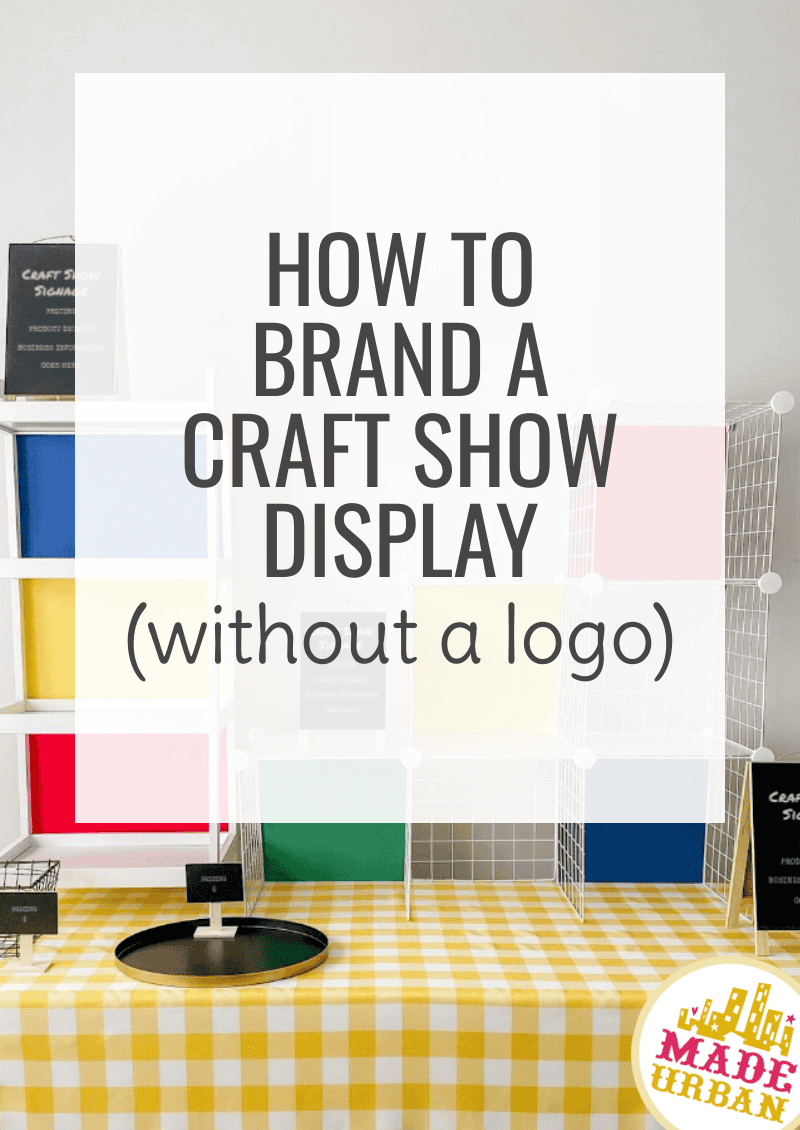

Hey, I’m Erin 🙂 I write about small business and craft show techniques I’ve learned from being a small business owner for almost 2 decades, selling at dozens of craft shows, and earning a diploma in Visual Communication Design. I hope you find my advice helpful!

What are your thoughts on a stall with just a huge variety of kitchen pot holders of all colors and designs
Hi Shirley!
I think a stall of pot holders can definitely be successful. A few suggestions I might offer:
1) consider one or two items you can make that people can add to their order. One person isn’t likely to buy multiple sets of pot holders, but they might want the matching hotplates to protect their counter or table, or a matching tea towel. Selling more than one item to more customers will help boost your sales.
2) It’s good to consider your personal style/signature style so your business develops a brand and identity. When you offer a little of everything (e.g. floral prints, vintage fabric, plaids, whimsical prints, animal prints, etc. and in every color of the rainbow), it’s hard to build a recognizable brand and it’s more difficult to display all the colors and styles.
3) If you want to start with a wide variety and then use sales to point you in a direction (e.g. you notice you sell more potholders in neutral colors or in plaid prints) try to make groupings using colors that look good together. For example, you might have one grouping with all shades of blue and greens, another grouping with red and oranges, another with neutrals, etc. Here’s how and why to do that: https://www.madeurban.com/blog/craft-show-display-5-minute-fix-color-groupings/
I hope that helps!
~Erin
My business name is Lisa-May’s Beaded Embers Woodburning and Beaded Jewelry. Most of my work is Christian or faith based or has a positive message to it. I say “I am spreading love one item at a time.” How could I incorporate this phrase I to my displays.
Hi Lisa! I would start with colors, symbols, textures, etc., that represent love to you and your target market. For example, an all white display with glowing lights that give it an angelic feel.
Great ideas! Where can I find the white boxes pictured in the all white display?
Hi Terri! I actually made those using foam core. It’s my favorite material to work with because you can build the boxes to the dimensions you need, they’re lightweight, and you only need an X-acto knife, ruler, and glue to create them. I’ll put a tutorial together soon!
~Erin
Awesome! Thank you!!
Hello! Can you tell me where you purchased the white boxes in the display that is all white? I love this set up and think it will go well with what I am trying to accomplish.